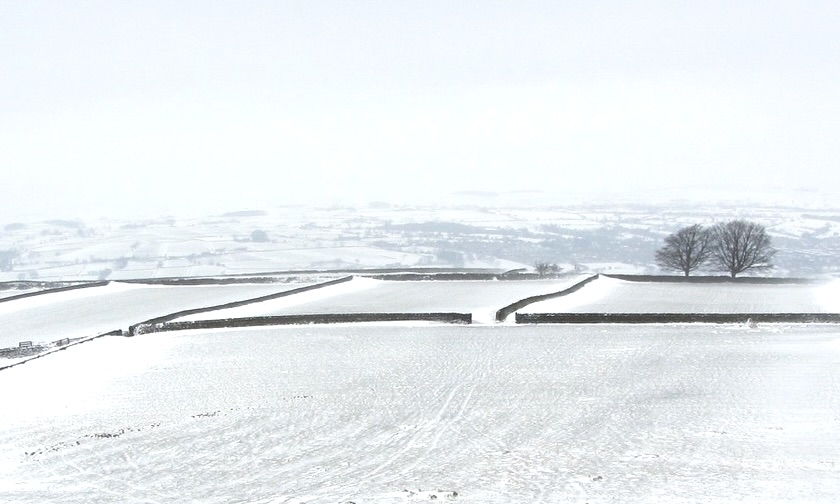Life in mid-14th-century England
The events described in Not a Soul but Us occur in a small, remote village in mid-14th-century England. At that time, English society was divided into three groups: those who fought; those who prayed; and those who worked. Those who fought—and administered justice—included the king and the nobility, down the food chain from monarch to small-time knight. These people were charged with protecting the country in the event of war. Those who prayed were the priests who served in churches and cathedrals, church officials, and the men and women in monasteries and nunneries, whose job it was to pray for God’s blessing and mercy on the living and speedy deliverance from Purgatory for the dead. Those who worked meant everyone else, about 90 percent of the population—mostly agricultural workers, craftspeople, artisans, and servants.

Slavery had been common in England until the 11th century, when the Norman invaders nudged it toward serfdom, in which individuals were no longer treated as portable property but rather as workers bound to land. Many inhabitants of England lived on rural estates known as manors, which were ruled by the landholder—the lord of the manor. (A manor lord might own an entire village, or a village might be divided between two different lords; villages and manors were not always identical territories.) Some residents of these manors were free tenants, who might work in agriculture (or as blacksmiths, thatchers, tailors, millers, etc.) and who were free to leave if they chose to.
But the unfree tenants—serfs—remained bound to this particular land and lord and could not leave. Nor could they marry without the lord’s permission. They could inherit assets left them by parents, but lords would always take a choice portion of that inheritance for themselves (a cow, for instance). Serfs were required to labor on the lord’s lands (or work in mines, or maintain roads) in exchange for the right to cultivate land to support themselves or, in fewer cases (such as shepherds and servants), in exchange for wages and food. If the lord sold the manor, the workers bound to it were considered part of that sale. Manors were typically run by a resident manager—the lord’s steward—who oversaw operations and presided over periodic courts to administer justice.

Just as the manor system dominated workers’ physical, work, and social lives, so the Church dominated their spiritual lives. Western Europe had one official Church, based in Rome, and by the mid-1300s there was almost no room for dissent or other religious beliefs. (Jews were expelled from England in 1290.) The church reserved the right to interpret scripture and establish religious truth. Few people outside the priestly and noble classes could read, and the Bible was generally available only in Latin, so it would have been extremely difficult for most people to have the confidence or means to think through religious doctrine for themselves—especially since doing so could lead to execution for heresy. Religious questions were left to the priestly class, who in all matters were enjoined to accept the authority of the Pope. Many people may have had a somewhat tenuous grasp of the details of theology. But everyone would have wanted a priest delivering last rites on their deathbeds, given that those who died unshrived (not having made confession and been absolved of sin) could face eternity in Hell. During the height of the plague pandemic, the Church gave permission for final confessions to be made to any layperson if a priest was not available, and Pope Clement VI granted remission of sin to anyone who’d died of plague.

All these lines of secular and religious authority and reciprocal obligation were meant to bind society together, to keep things ordered and stable. That didn’t last. The mid-century plague pandemic called into question the effectiveness of the prayers of the priestly class, and priests’ reputation wasn’t boosted by the post-plague priest shortage that led to the ordainment of some men who were unqualified for the office (and sometimes illiterate). Workers were also in short supply, leading some to demand higher wages—or, if necessary, seek them elsewhere. Within several decades, there was significant social unrest (such as the Peasants’ Revolt of 1381) and incipient religious dissent (for instance, the Lollards—followers of John Wycliffe, who spearheaded an English translation of the Bible). Although the causes of historical developments are always more complex than we can specify, some historians believe that the mid-14th-century plague pandemic disrupted European society in ways that substantially contributed to the cultural shifts that today we call the Renaissance and the Protestant Reformation.

The plague was not a one-and-done phenomenon. It kept coming back. We often refer to it as bubonic plague, but that’s simply the most common variety, marked by swellings or buboes on the neck, armpits and groin. This form of plague was not as lethal as the other two: pneumonic, with the plague bacillus attacking primarily the lungs; and septicemic, when it hit the bloodstream, causing widespread and painful bruising and quick death. The recurrences of 1361 and 1369 were particularly devastating as they disproportionately killed young men and infants. After that, occurrences came every six to twelve years, with lower lethality—until a general upsurge from 1430 to 1480, with some outbreaks killing 10 to 20 percent of the population. The last major outbreak in England occurred in 1666—described by Daniel Defoe in his historical novel, A Journal of the Plague Year.
Copyright 2023 Richard Smith
